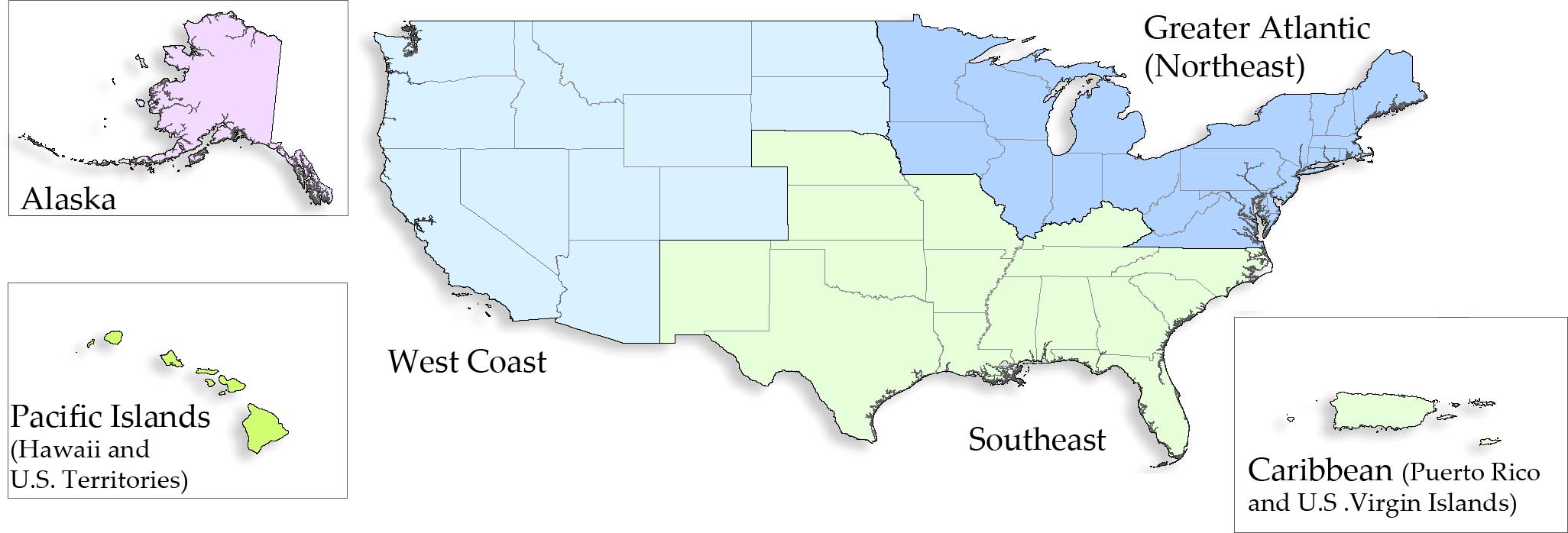Responsible Marine Wildlife Viewing
 Killer Whale (Orcinus orca) Photo: Whale Museum |
ADMIRE FROM A DISTANCE... for your safety and their protection. Never touch, swim with, feed, or harm in the wild. |
Overview
NOAA Fisheries believes that watching marine animals in their natural habitat can be a positive way to promote conservation and respect for the animals and the marine environment. However, irresponsible human behavior can disturb animals, destroy important habitats, and even result in injury to animals and people. To promote responsible and sustainable marine animal viewing, NOAA Fisheries has developed numerous educational programs, viewing guidelines and regulations, and enforcement actions.
Ocean Etiquette
Recognizing the importance of outreach partnerships, NOAA Fisheries and NOAA's Office of National Marine Sanctuaries have developed the Ocean Etiquette program to more effectively promote ocean stewardship. Anyone who visits, works, or plays in the marine environment and those who visit remotely (i.e. the Internet and aquariums) have an opportunity to make a difference in protecting the ocean. Ocean Etiquette is designed to provide the public with guidance on minimizing impacts to marine life and habitats. By making these direct connections between human behavior and environmental protection, the Ocean Etiquette program empowers visitors with specific knowledge of how to protect marine wildlife and habitats.
NOAA Fisheries Policy on Human Interactions With Wild Marine Mammals
The MMPA does not provide for a permit or other authorization to view or interact with wild marine mammals, except for specific listed purposes such as scientific research. Therefore, interacting with wild marine mammals should not be attempted and viewing marine mammals must be conducted in a manner that does not harass the animals. NOAA Fisheries does not support, condone, approve, or authorize activities that involve closely approaching, interacting, or attempting to interact with whales, dolphins, porpoises, seals, or sea lions in the wild. This includes attempting to swim with, pet, touch, or elicit a reaction from the animals.
Viewing Guidelines
The guidelines below provide valuable tips on how to responsibly view marine animals in the wild. Click on the map below for guidelines specific to that region, or view our general guidelines:
- Feeding or Harassing Marine Mammals in the Wild is Illegal and Harmful to the Animals
- General Marine Wildlife Viewing Guidelines [pdf]
- en español: Guía de Observadores de Vida Salvaje Marina [pdf]
- Using Unmanned Aerial Systems responsibly in the marine environment
- Wildlife Viewing Guidelines from the Alliance of Marine Mammal Parks and Aquariums
- Protect Dolphins Campaign
- Workshops
- Viewing and Interacting with Marine Mammals in the Wild: A Report from the Workshop at the 19th Biennial Conference on the Biology of Marine Mammals, 2011.
- Viewing Marine Mammals in the Wild: A Workshop to Discuss Responsible Guidelines and Regulations for Minimizing Disturbance. A Pre-Conference Workshop held before the 14th Biennial Conference on the Biology of Marine Mammals, 2001.
- Proceedings of the Workshop to Review and Evaluate Whale Watching Programs and Management Needs, 1988.
Regional Viewing Guidelines

- Alaska Marine Mammal Viewing Guidelines and Regulations
- Approach Regulations to Protect Right Whales in the North Atlantic and Humpback Whales in Hawaii and Alaska [pdf]
- Viewing Guide: Marine Mammals of the U.S. North Pacific and Arctic [pdf]
- Friends of the Elephant Seals

- Find tour operators participating in the Whale SENSE responsible viewing program
- Pacific Islands Regional Viewing Guidelines and brochure [pdf]
- Viewing Hawaiian Spinner Dolphins
- Viewing Hawaiian Monk Seals
- Approach Regulations to Protect Humpback Whales in Hawaii and Alaska [pdf]
- West Coast Region marine mammal viewing guidelines
- Viewing Guide: Marine Mammals of the U.S. West Coast [pdf]
- Whale, Dolphin, and Porpoise Watching:
- California Whale Watching Guidelines Brochure [pdf]
- Northwest Whale Watching Guidelines [pdf] with aircraft information
- Whale Watching Guidelines in the Pacific Northwest
 - Whale Museum
- Whale Museum - Be Whale Wise website

- Be Whale Wise Poster, killer whales [pdf] (updated 2016)
- Be Whale Wise Brochure, killer whales [pdf] (updated 2016)
- Seal and Sea Lion Information
- SOS WHALe: the Marine Mammal Disentanglement Network
- Responsibly Watching California's Marine Wildlife Handbook [pdf]
- Bottlenose Dolphin Conservation in the Southeast Region
- Dolphin Ecology Project's "Watch that Wildlife: A Guide to Viewing Wildlife in the Florida Keys" [pdf] [1.8 MB]

- Dolphin Friendly Fishing and Viewing Tips [pdf]
- Dolphin SMART
- Don't Feed Wild Dolphins: Public Service Announcement (PSA)

- FAQs on Bottlenose Dolphins--Increase in Depredatory (Stealing) Behavior and Deaths Associated with Recreational Fishing Gear [pdf]
- FAQs on the Protect Dolphins Campaign [pdf]
- Manatee Viewing (Save the Manatee Club)

- Southeast Regional Viewing Guidelines [pdf]
- Wildlife Viewing in Florida

- Northeast Regional Viewing Guidelines for whales, dolphins, and seals
- Viewing Guide: U.S. Northeast Atlantic marine mammals (design and illustrations courtesy of Garth Mix, GMix Designs)
- Approach Regulations to Protect Right Whales in the North Atlantic
- Seal Watching Guidelines [pdf]
- See a Spout . . . Watch Out! recreational boater education program

- Find tour operators participating in the Whale SENSE responsible viewing program
Killer whales
(Orcinus orca)
Photo: Mandy Merklein and P. Michael Payne, NOAA
Updated: August 25, 2016




